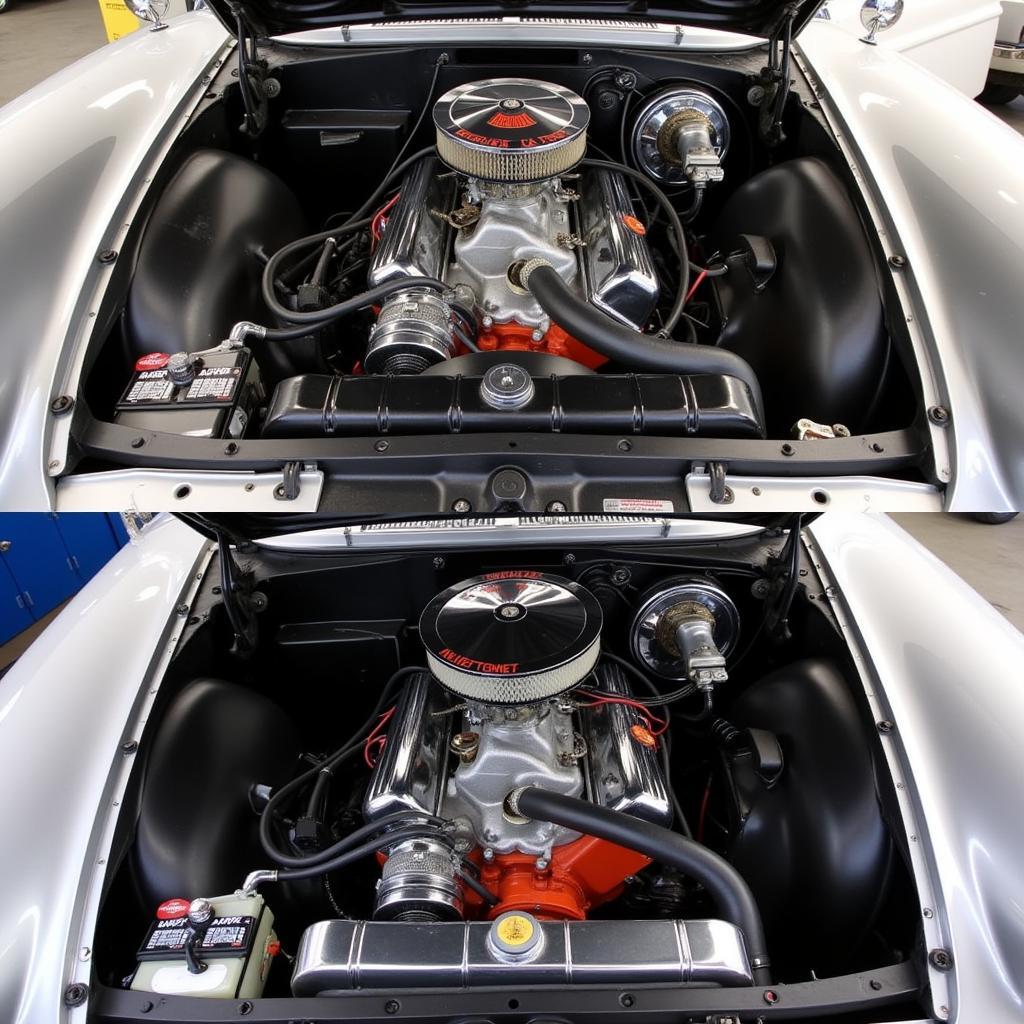Classic Car Garage Detail goes beyond a simple car wash and vacuum. It’s about preserving history, celebrating craftsmanship, and elevating automotive art to its highest form. Whether you’re a seasoned collector or a passionate enthusiast embarking on your first restoration project, achieving that coveted concours-level shine requires a meticulous approach, specialized tools, and an understanding of the unique needs of vintage vehicles.
Deconstructing the Detail: Key Areas of Focus
Classic car garage detail encompasses every inch of your prized possession, both inside and out. Here’s a breakdown of the key areas that demand attention:
1. Exterior Perfection: Paint Correction and Protection
Years of exposure to the elements can leave their mark on your classic car’s paintwork. A multi-stage approach is essential:
- Washing and Decontamination: Begin by removing loose dirt and grime with a pH-neutral car wash soap. Follow with a clay bar treatment to lift embedded contaminants like iron particles and overspray.
- Paint Correction: Assess the paint for imperfections like swirl marks, scratches, and oxidation. Employ a combination of machine polishing and hand polishing techniques to restore clarity and depth.
- Protection: Seal in the restored finish with a high-quality wax or sealant designed for vintage paint systems. Consider a ceramic coating for long-lasting protection and an unparalleled gloss.
2. Interior Time Capsule: Preserving Authenticity
The interior of a classic car is a portal to the past. Preservation is key:
- Gentle Cleaning: Use pH-neutral cleaners and soft-bristled brushes to clean delicate surfaces like leather, vinyl, and carpets. Avoid harsh chemicals that can damage or discolor these materials.
- Leather Conditioning: Keep leather supple and prevent cracking with a dedicated leather conditioner. Opt for products specifically formulated for older leather types.
- Detailing the Details: Pay meticulous attention to chrome accents, gauges, and switchgear. Use specialized cleaning products and tools to restore their original luster.
3. Undercarriage and Engine Bay: Unveiling Hidden Beauty
Don’t neglect the often-overlooked areas:
- Undercarriage Cleaning: Remove accumulated dirt, road grime, and potential rust-causing agents with a thorough undercarriage wash.
- Engine Bay Detailing: Degrease the engine and components, taking care not to damage sensitive electrical connections. A clean engine bay enhances not only aesthetics but also makes it easier to spot potential leaks or issues.
 Classic Car Engine Bay Detailing
Classic Car Engine Bay Detailing
The Classic Car Detailing Toolkit
Achieving concours-level results requires the right tools:
- Dual-Action Polisher: A must-have for paint correction, allowing for controlled and efficient removal of imperfections.
- Microfiber Towels: Use a variety of plush microfiber towels for different stages of detailing to avoid scratching delicate surfaces.
- Soft-Bristled Brushes: Essential for cleaning intricate areas like air vents, emblems, and around trim pieces.
- pH-Neutral Cleaners: Opt for gentle yet effective cleaning solutions formulated for vintage materials.
- Leather Conditioner: Choose a high-quality conditioner to nourish and protect your classic car’s leather interior.
The Value of Expertise: When to Call in the Pros
While many enthusiasts enjoy the hands-on process of detailing their own classic cars, some tasks are best left to experienced professionals:
- Extensive Paint Correction: Severe paint defects often require the expertise and specialized equipment of a professional detailer.
- Interior Restoration: If your classic car’s interior requires significant repairs or refurbishment, seeking the help of a specialist is recommended.
FAQs: Classic Car Garage Detailing
Q: How often should I detail my classic car?
A: The frequency depends on storage conditions and usage. As a general rule, a thorough detail twice a year is ideal, with regular maintenance washes in between.
Q: Can I use modern car care products on my classic car?
A: It’s best to use products specifically designed for vintage vehicles. Modern formulations may contain chemicals that can damage older materials.
Q: What’s the best way to protect my classic car’s paint from the elements?
A: Regular washing, waxing, and storing your car in a controlled environment are crucial. Consider a car cover for added protection.
Need help with your classic car detail?
Contact us on WhatsApp: +1(641)206-8880 or Email: [email protected]. Our team of classic car detailing experts is available 24/7 to answer your questions and provide top-notch service for your cherished vehicle.

Leave a Reply